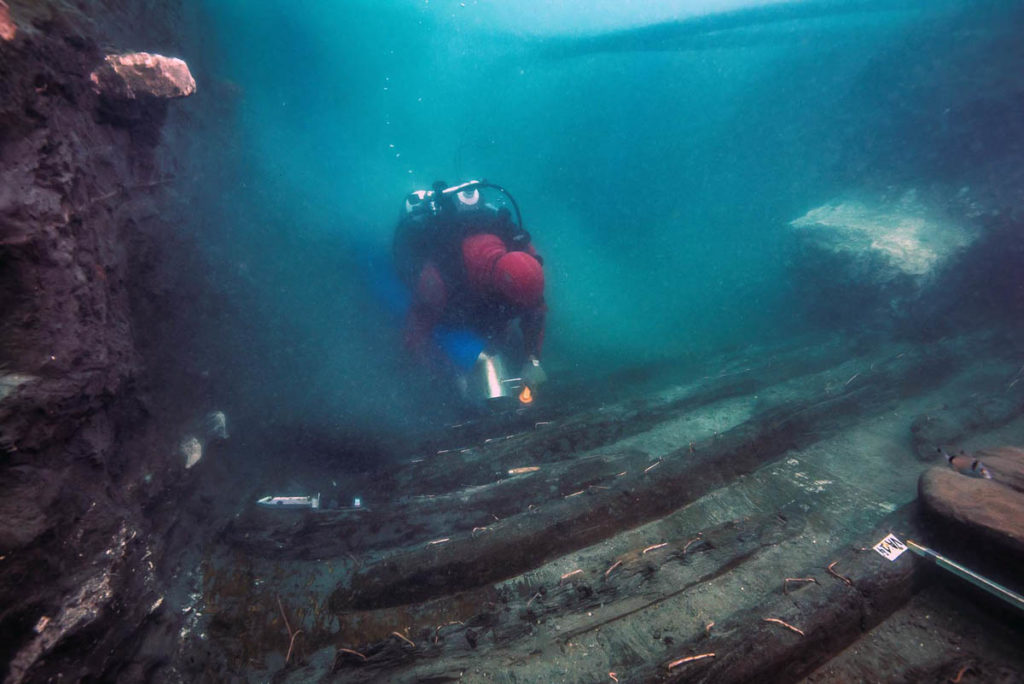The 2021 mission of the IEASM off the coast of Egypt in the Mediterranean has revealed extremely interesting results at the site of Thonis-Heracleion in the Bay of Aboukir.
Among the finds is a Ptolemaic galley. She sank after being hit by huge blocks from the famed temple of Amun, which was totally destroyed induring a cataclysmic event in the second century BC. The galley was moored at a landing stage in the canal that flowed along the south face of the temple when the disaster occurred. The fallen blocks protected these precious naval remains by pinning them to the bottom of the deep canal, which was then filled with the debris of the sanctuary. The galley lies under 5 metres of hard clay mingled with the remains of the temple and was only detected through the use of a cutting-edge prototype sub-bottom profiler.
“The finds of fast galleys from this period remain extremely rare”, explains Franck Goddio, “the only other example to date being the Punic Marsala Ship (235 BC). Before this discovery, Hellenistic ships of this type were completely unknown to archaeologists. Our preliminary study shows that the hull of this galley was built in the Classical tradition and relied on long mortise-and-tenon joints and well-developed internal structure. However, it also contains features of ancient Egyptian construction and allows us to speak of a mixed type of construction. It was a rowing ship that was also furnished with a large sail, as shown by a mast step of considerable dimensions. This long boat was flat-bottomed and had a flat keel, which was quite advantageous for navigation on the Nile and in the Delta. Some typical ancient Egyptian shipbuilding features, together with the evidence for a reuse of wood in the ship, indicate that it was built in Egypt. With a length of more than 25 m it had a length to breadth ratio close to 6 to 1.”
In another part of the city, a tumulus stretching alongside the north-east entrance canal revealed remains of a large Greek funerary area covered with sumptuous funerary offerings. They date back to the very first years of the 4th century BC. This discovery beautifully illustrates the presence of Greek merchants and mercenaries who lived in Thonis–Heracleion, the city that controlled the entrance to Egypt at the mouth of the Canopic branch of the Nile. The Greeks were allowed to settle in the city during the late Pharaonic period. They built their own sanctuaries close to the huge temple of Amun. These were also destroyed in the cataclysm, and their remains are found mixed with those of the Egyptian temple.







